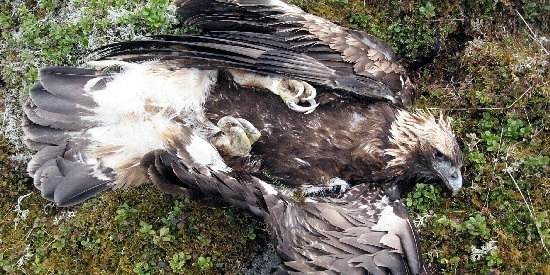Tayside Police say deliberate animal poisonings should not be tolerated in modern society.
A report released by Scotland’s Wildlife Incident Investigation Scheme this week revealed birds of prey, livestock and pet cats and dogs have all been victims of deliberate or accidental poisoning in the past year.
Two hundred and thirty-three incidents were reported to the scheme in 2010, a 40% increase on the year before.
The report found that the number of poisonings investigated is on the rise, including 16 possible cases in Tayside and one in Fife.
The Tayside incidents included two barn owl carcases that were found in a plastic bag by the side of the road in February 2010.
Dead buzzards were also found in Tayside that contained traced of the rat poison bromadiolone in their livers, while it is also suspected a red kite that was found in May last year was the victim of pesticide poisoning.
In Fife, traced of another rat poison called difenacoum were found in a dead buzzard.
A spokesman for Tayside Police said: “The use of pesticides and poisoned bait to kill animals should not be tolerated by a modern society. It is something that is taken very seriously by all agencies involved in dealing with wildlife crime.
“It presents a risk not only to the intended target, but also to other animals, including domestic pets, and indeed members of the public. Tayside Police would urge anyone who has any information about the incident, or any other illegal use of pesticides against wildlife, to contact us on 0300 111 2222.”
Across Scotland there were 22 abuse incidents involving birds of prey, including four golden eagles. The illegal use of the insecticide carbofuran accounted for more than half of all 32 abuse incidents involving all animals, with nine different pesticides detected in the remaining incidents.
Bird of prey poisonings account for more than two-thirds (69%) of all abuse cases.
Environment minister Stewart Stevenson said: “Scotland’s natural environment is one of our most valuable assets and it is essential that we protect it and ensure that pesticide use is regulated appropriately.
“The number of birds of prey which continue to be victims of deliberate poisoning does remain a concern and we will continue to use the range of measures available to combat this.
“Whilst I welcome a slight reduction in the overall number of abuse incidents from 2009 into 2010, there is unfortunately no change in respect of cases involving raptors. However, early indications would seem to suggest that there is a reduction this year.
“I am delighted to see law enforcement, land management organisations and conservation bodies now working together to tackle the wide issues surrounding raptor persecution.”
Duncan Orr-Ewing, head of species and land management at RSPB Scotland said: “The impact of illegal poisoning on … bird of prey species remains a serious concern, undermining the recovery of their populations.”
